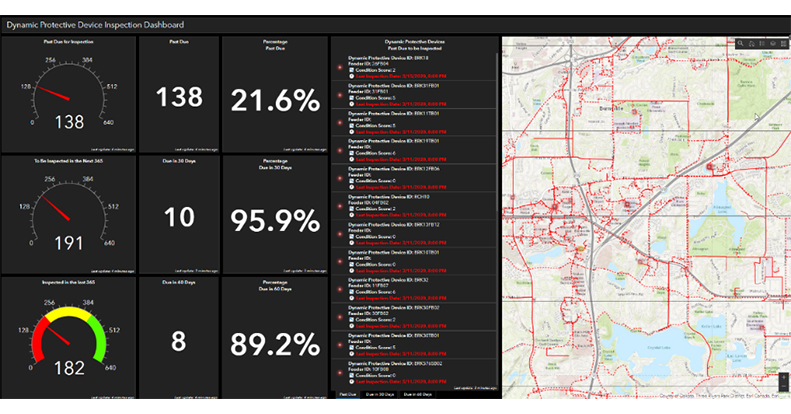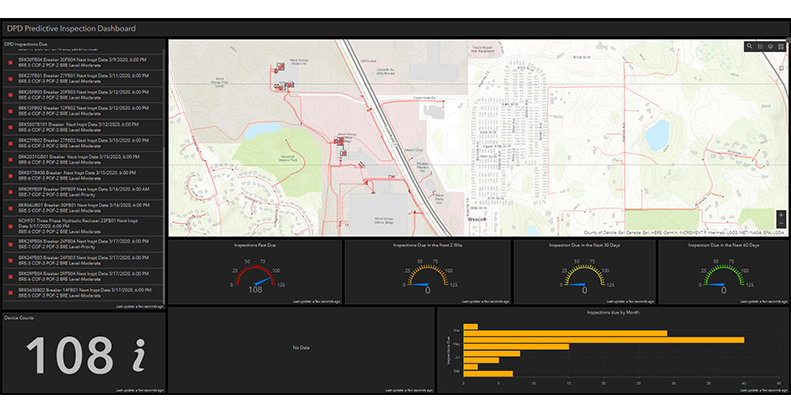See Part 1 of this 3 part series here.
See Part 2 of this 3 part series here.
Tips for Getting the Most from Your Data
Introduction
Whether your inspection and maintenance programs are basic or advanced, the real value comes from using the data to optimize your assets’ lifespan and boosting the reliability of your network. Your inspection process should drive the collection of information that is consistent and comparable. And, you will need tools that allow the information to be viewed in a way so you and your stakeholders can understand what the data is telling you.
Collect the right information
All operating companies have identified business goals that drive their operations. You need to make sure that the data being collected in the inspection process answers the key questions and supports the analysis needed to measure and advance those goals. It is a good idea to review company, department, and team goals while designing an inspection program. You need to be sure you are collecting information that helps you measure and address asset issues that have an impact on goals and business drivers. If you are not collecting the right information, you need to make changes in inspection surveys to get the right information coming in.
Most companies also have asset maintenance and inspection programs driven by regulatory bodies. These fall into two categories:
- Network performance improvement metrics are frequently agreed to by companies with the public utility commissions whose jurisdiction they fall under. The metrics are indicators related to network performance and/or operating efficiency. They require a utility to establish targets for metrics that gauge network performance like Reliability (SAIDI & SAFI), Power Quality, or customer service levels and then show improvements in those metrics over time. You need to be sure your inspection and maintenance programs are impacting those metrics in a positive way and that you can show it in reporting.
- Inspection and maintenance compliance are regulations that require inspection and maintenance programs be established, documented, and consistently implemented. These regulations are typically implemented and enforced by NERC on utilities that participate in the generation or transmission systems. These regulations require utilities to be able to provide auditing data demonstrating that they are executing their inspection and maintenance programs. For utilities, the inspections must be completed in compliance with their programs and data must be maintained to prove they are compliant.
Explore your data
When moving forward with inspection and maintenance programs, the first step is almost always reviewing data to assess the current state. Looking for inconsistencies in how the data is collected in the inspection process allow surveys to be redesigned to and enhanced to drive consistency. While considering the questions that are most important to answer to operate your system most effectively, you will need to go back to survey questions to assure the needed data is being collected and is consistent. You also need to be aware of how the data will be used to support reporting and auditing assure it contains all the elements needed.
Fill in the gaps
Early in the process, the data needed to perform relevant analysis may be missing. By reviewing the data you currently have, it may be possible to extrapolate or use other data analysis techniques to fill in the gaps. It is always best to use data from direct collection, but it is often possible to develop an understanding of metrics by using existing data. Because there will likely be gaps in existing data and new issues and goals will unavoidably arise, it is critical to use field collection software that is easy to modify and deploy to the field allowing data collection issues to be corrected as needed.
Consider failure modes when doing analysis
Each device type will show different failure modes. For instance, older hydraulic reclosers may fail because, over time and with operations the cooling oil breaks down causing the internal insulation to fail. As recloser technology has matured, the most common failure mode for them is now mechanical failure of the operating mechanism. Because of this, the predictor of failure has changed from being a combination of age and operations to just the number of operations.
Domain knowledge is needed to establish the failure modes for equipment type, tempered with local knowledge specific to the operating conditions and practices within your utility, to assure you collect data to allow analysis to identify equipment that may be nearing failure. Root cause analysis can help to establish “markers” which should be collected in inspections. Other observations can be gleaned over time by watching incoming inspection data in conjunction with equipment failure data.

Make results visible
Presenting data in a way that helps ensure the correct conclusions are drawn can significantly increase the overall value of inspection and maintenance programs. When presenting the data, the audience for the information must be considered. This makes it important to use flexible, easily configurable reporting tools that allow a clear picture to be drawn from the data. Consumers of the data may include inspection program managers, systems operations management, regulatory group managers, and other departments. Each group would be looking at the reports to identify different operational needs.
Using software that is spatially enabled is also very helpful when considering data for equipment that may be scattered over thousands of square miles of territory. When reporting combines geographic, graphic and textual information, insights can be revealed that could never be derived from looking at textual information alone. Reporting software should also be easily modified as new understanding is gained and new goals arise. The good news is that modern GIS come with reporting tools that can be leveraged. This is even easier if your asset management software is GIS centric and capable of using the spatial power of GIS to manage and analyze your inspection program.

Summary
Moving your asset management program forward does not require a huge investment in new technology. You may already own most of the technical components needed. Assessing where you are and developing a roadmap forward is an important first step. POWER is ready to help you understand the limits of your current system and configure the software you have. Or we can implement our own POWER360AMS GIS-centric asset management solution for you.

Article originally published on the POWER Engineers website.



